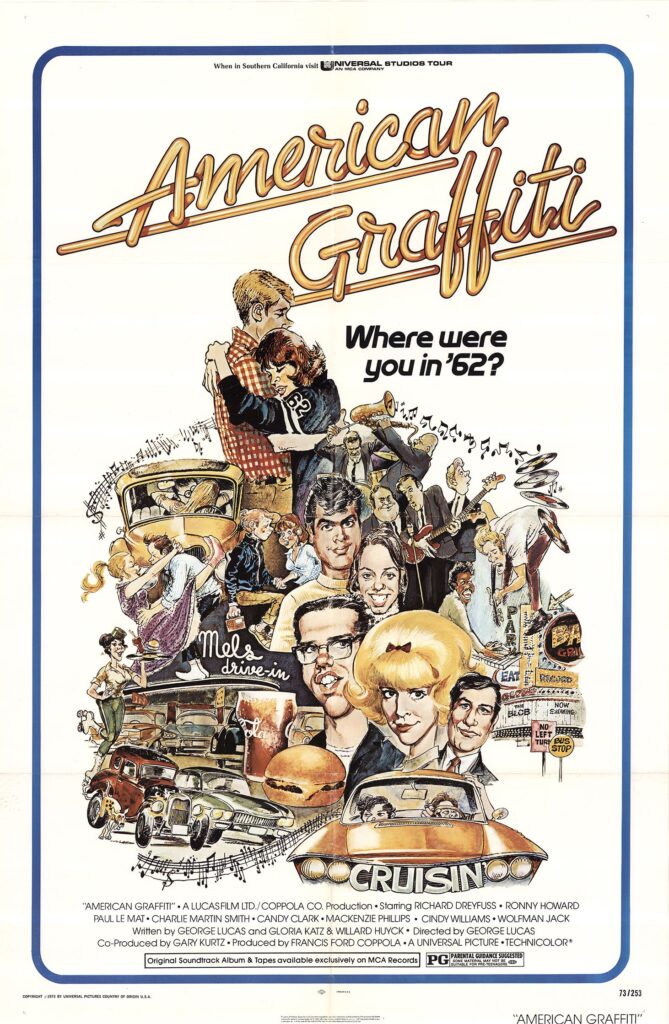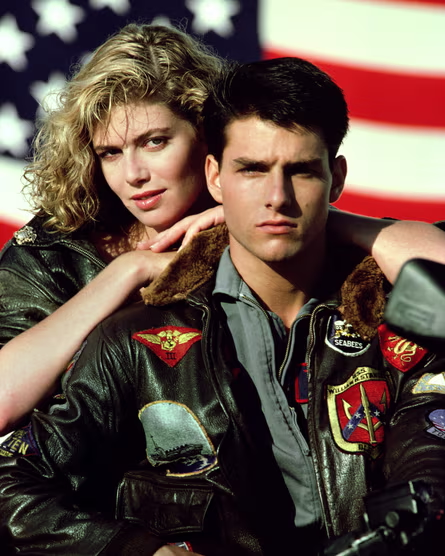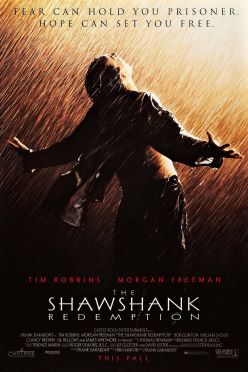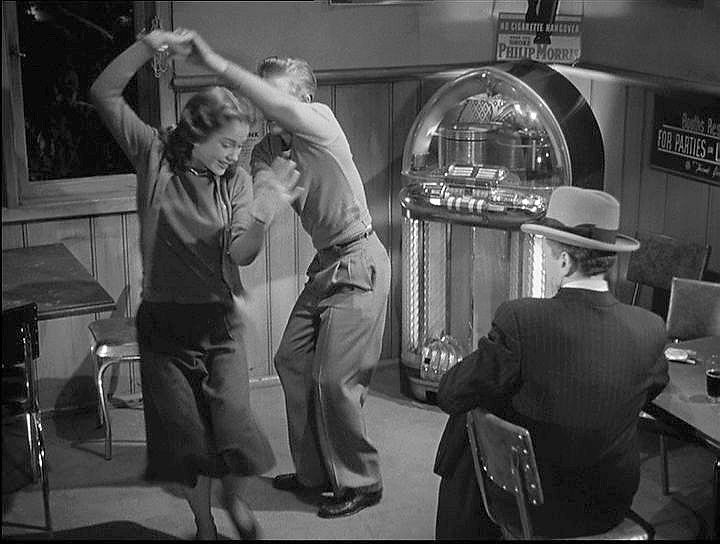Jukeboxes, with their glowing lights, nostalgic designs, and ability to summon iconic songs, have long been more than mere props in films. These music-playing machines serve as powerful narrative devices, evoking emotion, setting the tone, and reflecting characters’ inner lives. When used effectively, jukeboxes transcend their functional role to become symbols of time, place, and feeling, anchoring key moments in a story. This article explores notable instances where jukeboxes have been employed to great effect in cinema, examining their narrative purposes, cultural significance, and emotional resonance.
1. Setting the Scene and Evoking Nostalgia
Jukeboxes are often used to establish a film’s temporal and cultural setting, particularly in period pieces or stories steeped in nostalgia. Their song selections and retro aesthetics instantly transport audiences to a specific era, while the music they play underscores the mood of a scene.
Example: American Graffiti (1973)

George Lucas’s American Graffiti is a love letter to early 1960s youth culture, and the jukebox is a recurring motif that grounds the film in its era. Set in 1962, the film follows a group of teenagers cruising through their final night of summer. Jukeboxes, often found in the film’s diner scenes at Mel’s Drive-In, blast classic rock ‘n’ roll hits like “Rock Around the Clock” by Bill Haley & His Comets and “Ain’t That a Shame” by Fats Domino. These machines are not just background props; they embody the carefree spirit of the time, contrasting with the characters’ looming uncertainties about adulthood and the Vietnam War.
In one pivotal scene, Curt (Richard Dreyfuss) sits in the diner, and the jukebox plays “The Great Pretender” by The Platters. The song’s melancholic tone mirrors Curt’s introspection about his future, while the jukebox itself becomes a symbol of the era’s innocence, soon to be lost. The machine’s glowing presence and carefully curated soundtrack create a sensory time capsule, immersing audiences in the bittersweet nostalgia of youth.
Why It Works
The jukebox in American Graffiti is a cultural artifact that anchors the film’s setting and amplifies its themes of fleeting youth and change. By playing authentic hits of the early 1960s, it evokes a shared cultural memory for audiences, making the characters’ experiences feel universal.
2. Driving Emotional and Romantic Moments
Jukeboxes often serve as catalysts for emotional or romantic turning points, with characters using them to express feelings or connect with others. The act of selecting a song becomes a deliberate, intimate gesture that deepens character relationships and resonates with viewers.
Example: Top Gun (1986)
In Tony Scott’s Top Gun, a jukebox scene becomes one of the film’s most iconic moments. At the bar where naval aviators unwind, Maverick (Tom Cruise) and Goose (Anthony Edwards) serenade Charlie (Kelly McGillis) with “You’ve Lost That Lovin’ Feelin’” by The Righteous Brothers, prompted by a jukebox selection. The song’s soulful croon fills the room as Maverick’s flirtatious performance, joined by his fellow pilots, breaks the ice with Charlie, setting the stage for their romance.

The jukebox here is more than a music player; it’s a narrative tool that facilitates Maverick’s bold, charismatic approach and underscores the camaraderie among the pilots. The song choice, a romantic classic, foreshadows the emotional stakes of Maverick and Charlie’s relationship while cementing the scene’s place in pop culture history.
Why It Works
The jukebox scene in Top Gun combines music, character, and chemistry to create a memorable moment. The song’s emotional weight and the jukebox’s role as a shared, communal object amplify the scene’s romantic and nostalgic appeal, making it a standout in the film.
3. Symbolising Character Agency and Rebellion
Jukeboxes can also represent characters’ agency or defiance, as choosing a song allows them to assert their identity or challenge the status quo. These moments often highlight a character’s individuality or mark a turning point in their arc.
Example: The Shawshank Redemption (1994)
While The Shawshank Redemption doesn’t feature a traditional jukebox, it includes a parallel moment where music serves a similar purpose. In one of the film’s most uplifting scenes, Andy Dufresne (Tim Robbins) plays Mozart’s “The Marriage of Figaro” over the prison’s loudspeaker system, a moment that resonates like a jukebox scene in its use of music to defy oppression. However, a more direct jukebox example can be found in other films, such as Rebel Without a Cause (1955).

In Rebel Without a Cause, directed by Nicholas Ray, a jukebox features prominently in a diner scene where Jim Stark (James Dean) and his friends gather. The jukebox plays a rock ‘n’ roll tune, reflecting the rebellious spirit of 1950s youth culture. Jim’s interaction with the jukebox—selecting a song that blares defiantly—mirrors his own struggle against societal expectations and his search for identity. The machine becomes a symbol of youthful rebellion, its music a counterpoint to the conformity of the adult world.
Why It Works
The jukebox in Rebel Without a Cause empowers Jim to express his nonconformity, aligning the music with his inner turmoil. Its presence in the diner, a space of teenage freedom, reinforces the film’s themes of alienation and resistance, making the jukebox a powerful symbol of agency.
4. Creating Tension or Irony
Jukeboxes can also heighten tension or create irony by juxtaposing cheerful music with darker narrative moments. This contrast amplifies the emotional impact of a scene, catching audiences off guard.
Example: Natural Born Killers (1994)
Oliver Stone’s Natural Born Killers uses a jukebox to chilling effect in a diner scene where Mickey and Mallory Knox (Woody Harrelson and Juliette Lewis), a couple of serial killers, unleash chaos. As they enter the diner, a jukebox plays a lively, upbeat song, creating a jarring contrast with the violence that erupts. The song’s cheerfulness underscores the couple’s nonchalant attitude toward their crimes, heightening the scene’s unsettling tone.
The jukebox here serves as a narrative counterpoint, its music clashing with the brutality to create a sense of irony and amplify the film’s critique of media sensationalism. The machine’s bright, retro design also contrasts with the modern nihilism of Mickey and Mallory, adding visual irony to the scene.
Why It Works
The jukebox’s upbeat music in Natural Born Killers creates a stark contrast with the violence, enhancing the scene’s impact and reinforcing the film’s satirical edge. Its presence underscores the disconnect between the characters’ actions and society’s romanticized view of them.
5. Cultural and Historical Commentary
Jukeboxes often carry cultural weight, representing specific musical movements or social shifts. Filmmakers use them to comment on the historical context of their stories, embedding layers of meaning in their song choices and settings.
Example: Do the Right Thing (1989)
Spike Lee’s Do the Right Thing uses a jukebox in Sal’s Pizzeria to reflect the cultural tensions at the heart of the film. Set in a racially charged Brooklyn neighborhood, the film features a jukebox that plays a mix of soul, R&B, and hip-hop, including Public Enemy’s “Fight the Power.” The song, selected by Radio Raheem (Bill Nunn), becomes an anthem of resistance, blasting from his boombox but echoing the jukebox’s role as a communal music source.
The jukebox in Sal’s Pizzeria, though less prominent than Radio Raheem’s boombox, represents the cultural crossroads of the neighborhood. Its presence highlights the clash between Sal’s Italian-American identity and the African-American and Latino communities around him, with music serving as both a unifier and a point of contention.
Why It Works
The jukebox in Do the Right Thing grounds the film in its cultural and historical context, using music to reflect the community’s vibrancy and tensions. Its song choices amplify the film’s exploration of race, identity, and power, making it a subtle but potent narrative tool.
Conclusion
Jukeboxes in films are more than nostalgic set pieces; they are dynamic storytelling devices that evoke emotion, reflect character, and comment on culture. From the nostalgic glow of American Graffiti to the rebellious spirit of Rebel Without a Cause, the romantic charm of Top Gun, the ironic violence of Natural Born Killers, and the cultural commentary of Do the Right Thing, jukeboxes have left an indelible mark on cinema. Their ability to summon music that resonates with characters and audiences alike makes them powerful symbols of time, place, and feeling. When used to great effect, jukeboxes don’t just play songs—they tell stories.
Jukebox Buyer Resources
Jukebox Auctions – Vinyl Record Jukeboxes – CD Jukeboxes – Jukebox Records

